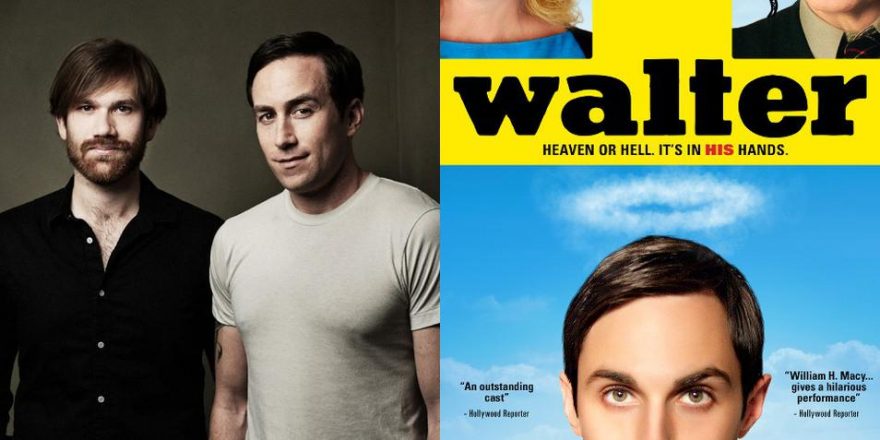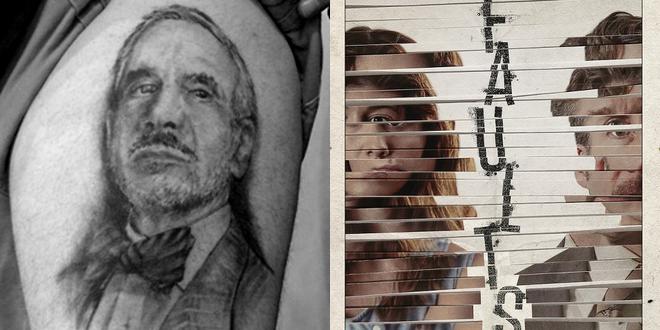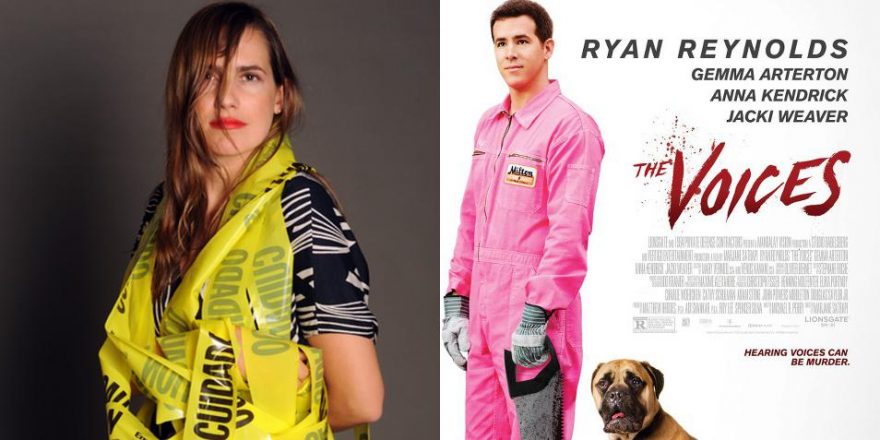In Anna Mastro’s Walter, the title character — an oddball movie-theater usher played by Andrew J. West — is not Jesus, but he is the son of God. As such, he’s tasked with deciding whether people go to Heaven or Hell, and it’s a decision he can make intuitively and instantly when he sees someone, until he meets a person (a ghost?) upon whom he finds he can’t pass judgment, no matter how hard he tries.
So we’re gonna talk here about something that is only tangentially related to Walter, but that also seems to come up quite a bit in what we do. We make movies that often have some kind of science-fiction — or more accurately, mythical — element to them, and Walter (in a completely different way) has the same thing.
When we make films, we are often creating some kind of completely new supernatural myth. That is, we don’t make zombie, werewolf or vampire movies, the kind for which the “rules” are assumed going in so that you don’t have to explain them. Imagine if every vampire movie took enormous pains to explain that they have fangs, they drink blood, they can’t touch sunlight, and that this set of rules constitutes what it is to be a vampire. We’re talking exposition-o’clock gone nuclear here — holy hell, it’s the clunky storytelling apocalypse! Walter, however, has the luxury of not needing to waste screen time explaining another kind of myth, because it’s based on the Judeo-Christian myth, and uses it to its advantage.
Early in the movie, when Walter says, “I’m the son of God,” it just makes perfect, hilarious sense. You don’t need to explain why, when walking down the street, he says, “Heaven. Hell. Hell. Hell. Heaven,” as he looks at people. So the question with this particular myth becomes, how much can you assume the audience already knows? And by extension, what rules can you then break?
When people make a film that tries to forge a new myth, one problem is that it can often end up feeling very expositional, often with one major pivotal scene in which all the cards are laid out on the table. We try to hide these explanations with all kinds of old screenwriting tricks, like having it grow out of the emotion of the scene, or making the actors in the scene do a “walk and talk” (or something similarly active) so as to mask the exposition in what they’re saying, or placing anything on the screen to distract the audience from the literal exposition of the myth. Often the solution is to have this exposition doled out slowly throughout the film so the big scene feels less like an info-dump.
What we sometimes do in our movies is to mess with the idea of established myth and use it as a red herring for something completely different. In Resolution, the myth of our antagonist is a new one, so in building it we included red herrings pointing to it being part of a different, pre-established myth: UFO cult members, a mental asylum escapee, a “devil with a briefcase.” (It’s like putting 100 variations of Chekhov’s gun on the wall, but instead of them going off at some point, someone comes in and stabs you with the knife that is our new myth.) In Spring, we did the same with monsters: we had vampires, werewolves, zombies, but ultimately the myth was something new. And in a short film we did called Wrecked, we crossed paths with Walter by using the Biblical myth of a man who thinks he’s talking directly to God. We’re pretty convinced people might see this trick coming, but we still like it.
Sometimes we’re tempted to create some character who, over the course of the movie, explains the new myth very literally and out loud. Sometimes we give in fully to that temptation and it’s actually a good thing. The benefit is, hey, you made a new myth! And the cons are that a lot of screen time is spent explaining things, and the rule of “show don’t tell” gets smashed to pieces and becomes “show and tell.” This is screen time that could be spent on, say, building character, which we try really hard to make one and the same with myth-building. But it’s a complicated and messy task to which it is hard to assign a value of either “success” or “failure” because people can perceive it differently. And some movies try less hard, opting to bring in the psychic, paranormal occult specialist, and basically a bunch of made-up rules are brought to the forefront so you know how to deal with the new myth. (Real quick — how awesome would it be if that were your job, to just come in and explain the rules of a made-up paradigm? Way better than Aaron’s job at Papa John’s or Justin’s many gigs bussing tables.)
But to get back to Walter, what Anna Mastro gets to do is put her myth/premise into one or two sentences to set up the entire storyline and introduce the inevitable conflict — finding a man whom Walter is unable to judge. How beautifully simple is that? And now the film has all the character-time it needs to make us feel feelings! Instead of laying out the potentially esoteric idea of a new mythology, we get to explore the idea of loss and the nuances of the human condition; less exposition, more laughter and tears. With our movie Spring, you have to walk through the valley of science and understanding before we even get to try to make you cry. That’s not necessarily a good or bad thing, but it’s a choice you have to make by default when you decide that you want to mess with the Canon of Myths.
Myths easily and quickly develop a syntax for a large group of ideas by only using a few words (as language and human interaction should), and in many ways it accesses and roots itself in some of the earliest memories that we all have. Not to get too Jungian on you, but archetypes can be incredibly useful for transcending the basics that we already know. Let’s call it the Christ-figure Paradigm of Radness. Deriving from the primordial sun gods and resulting in the model for most modern-day religions, the Christ-figure Paradigm of Radness is an awesomely economic device for mythical storytelling. In film, even using basic scientific principles like Newton’s Laws requires at least a little exposition, but with the Christ-figure Paradigm of Radness you scarcely need more than a few words or a few images. Without this paradigm, we’d have to explain it every single time we used Biblical mythology in order to explore a deeper idea. Natives in the South American jungle wouldn’t intuitively understand something like Walter because it uses an assumed knowledge of a pre-existing myth.
Genre is in many ways a pre-established set of ideas that you can stand on without having to explain them, in the way that films and stories all stand on the shoulders of other giants. Instead of re-proving a scientific fact, you have a license to build on it, to take it further and help us all understand even more than we did before. Walter took the Judeo-Christian myth and used it to its advantage and helped us understand more about the human condition, and we think that’s a beautiful thing.
Full disclosure: Inconsequentially but very charmingly, we met Anna Mastro, the lovely and talented director of Walter, at a warehouse-sized gala thing with 3000 people where no one knew anyone else. She had the sand to just walk up to the two of us and introduce herself and start chatting to us. Huge sigh of relief that her movie is also a work of radness.








